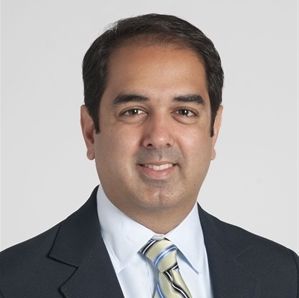Article
Anti-VEGF Injection Frequency Not a Significant Predictor of RVO Visual Acuity Outcomes
Author(s):
Treatment delay and steroid usage were both associated with worse improvements in long term BVA and CST in patients with RVO-related macular edema.
Rishi Singh, MD

New findings suggest that both treatment delay and steroid usage were associated with inferior improvements in long-term best visual acuity (BVA) and central subfield thickness (CST) in eyes diagnosed with retinal vein occlusion (RVO)-related macular edema.
However, it was noted that steady-state anti-vascular endothelial growth factor (VEGF) injection interval was not found to be a significant predictor of patient outcomes.
“Further research is necessary to determine whether the exact combination of anti-VEGF agents used may contribute to the observed functional and anatomic outcomes,” wrote study author Rishi Singh, MD, Cleveland Clinic Cole Eye Institute.
These findings were presented at the Association for Research in Vision and Ophthalmology (ARVO) 2022 Meeting in Denver, Colorado.
A number of previous phase 3 trials have helped demonstrate the efficacy of schedline anti-VEGF injections in controlled settings for the treatment of macular edema. Yet, it is sometimes difficult to achieve comparable levels of injection consistency and patients are oftentimes undertreated in these settings.
Investigators in this study performed a retrospective cohort study of patients diagnosed with RVO in a tertiary ophthalmic center. The cohort consisted of 400 eyes with RVO-associated macular edema.
These patients who received their first anti-VEGF injection between 2003 - 2020 were included, with a BVA of 20/400 Snellen or better. Exclusions included history of previous injections and ocular surgery within 6 months of onset of treatment, as well as the presence of other ocular conditions treated with anti-VEGF agents.
Further, linear regression analyzed the relationship between treatment patterns and 12 and 24-month BVA and CST, including adjustments for sociodemographic factors and systemic comorbidities.
The analysis included 215 eyes with branch RVO (BRVO) and 185 eyes with central RVO (CRVO) or hemiretinal RVO (HRVO). Data show 50.2% of patients with BRVO received anti-VEGF injections ≤q8 weeks, 25.6% received injections q8 - q12 weeks, and 24.2% received injections >q12 weeks.
Additionally, 44.3% of patients with CRVO/HRVO received anti-VEGF injections ≤q8 weeks, 31.9% received injections q8 - q12 weeks, and 23.8% received injections >q12 weeks.
Singh and colleagues observed no significant differences in BVA and CST at baseline, 12, or 24 months in all injection interval subgroups in BRVO and patients with CRVO/HRVO. The data show 8.4% of BRVO and 9.2% of patients with CRVO/HRVO were treated with steroids.
For patients with BRVO, steroid usage was associated with a 6.61 (95% CI, 0.27 - 12.96; P <.01) letter loss in BVA at 12 months. It was additionally associated with a CST increase of 58.32 μm (95% CI, 9.66 - 106.97; P = .02) at 12 months and 68.47 μm (95% CI, 12.42 - 123.51; P = .02) at 24 months.
Moreover, the delay between diagnosis and treatment of macular edema was 35.8 ± 130.5 days in patients with BRVO and 10.7 ± 34.2 days in patients with CRVO/HRVO.
For patients with BRVO, every day of delay had an association with a 0.03 (95% CI, 0.01 - 0.05; P = .01) letter loss of BVA at 24 months.
Then, CST was increased by 0.18 (95% CI, 0.04 - 0.31; P = .01) and 0.79 (95 CI%, 0.22 - 1.36; P = .01) μm for every delayed day at 24 months in patients with BRVO and CRVO/HRVO patients, respectively.
The study, “Anti-Vascular Endothelial Growth Factor Treatment Patterns and Outcomes in Retinal Vein Occlusion in Routine Clinical Practice,” was presented at ARVO 2022.




